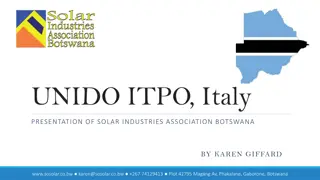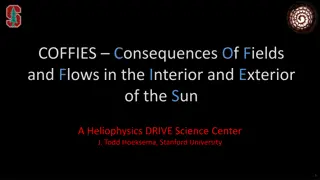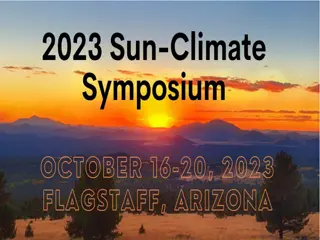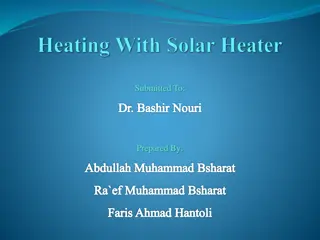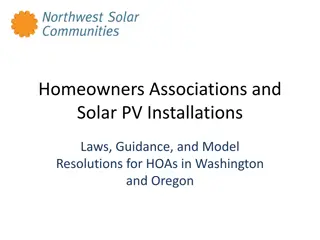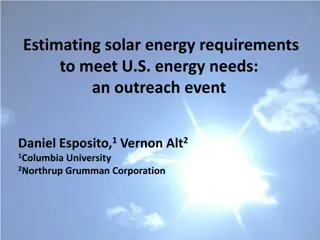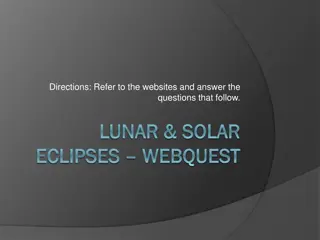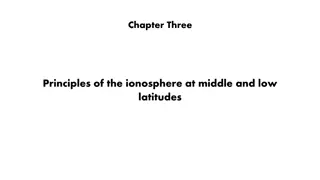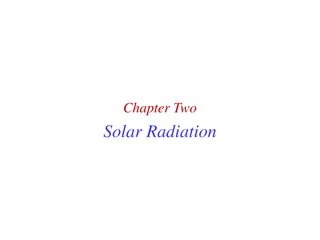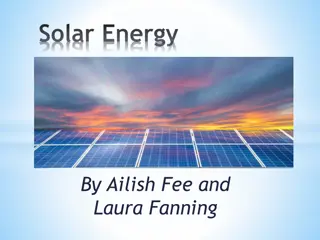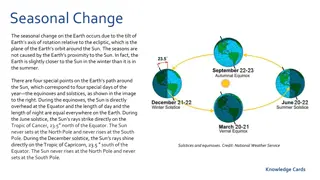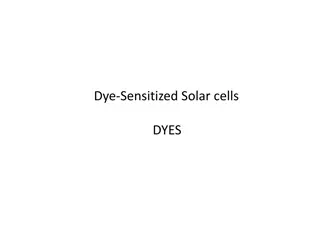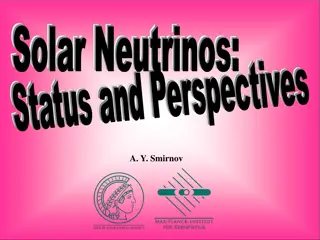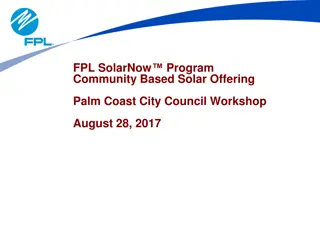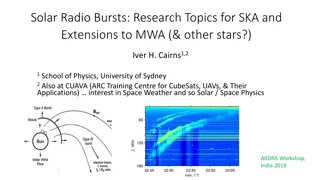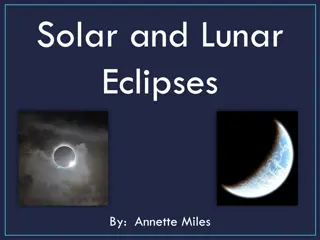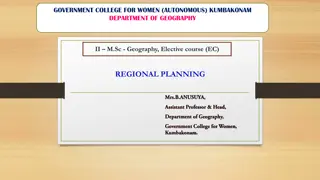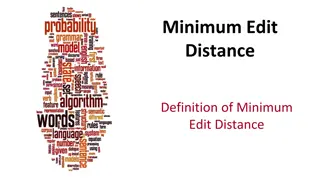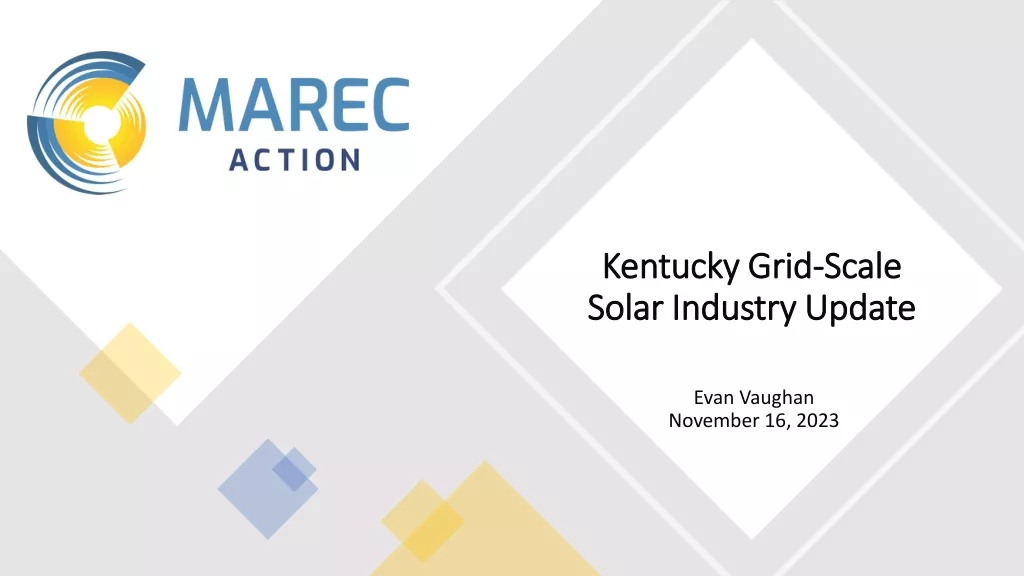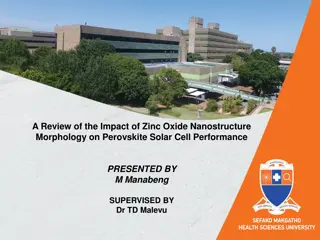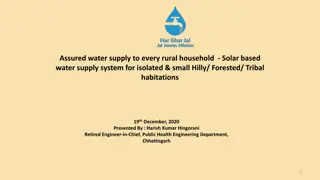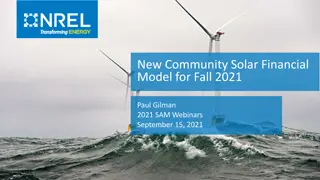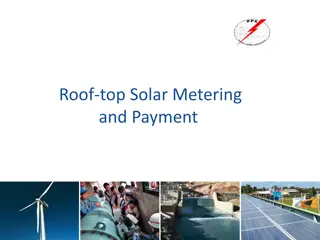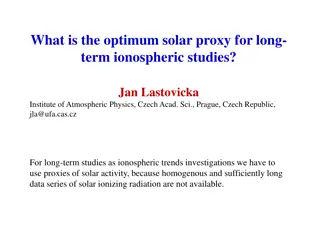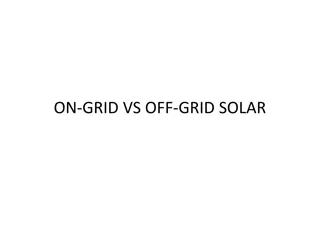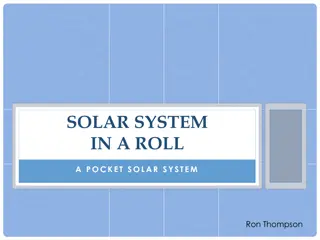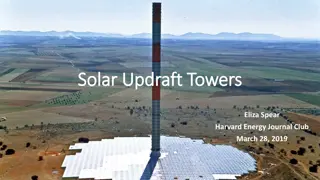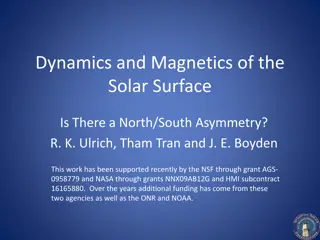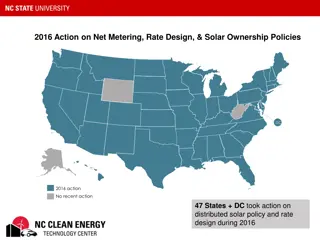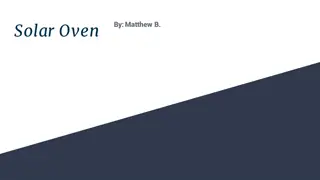The Behavior of Spotless Active Regions During Solar Minimum
In this work presented at the SPAnet Workshop on Radio Astronomy in 2017, the study analyzed the physical parameters of spotless active regions observed during the solar minimum period from 2007 to 2010. Radio maps at 17 GHz from the Nobeyama Radioheliograph and magnetograms from the Michelson Doppler Imager were utilized. The research found that spotless active regions display similar characteristics to ordinary ones, can persist on the solar surface for extended periods, and may exhibit small flares. The study also noted variations in the magnetic field strengths of these regions. Keywords include Sun, radio radiation, magnetograms, sunspots, and active regions.
Download Presentation

Please find below an Image/Link to download the presentation.
The content on the website is provided AS IS for your information and personal use only. It may not be sold, licensed, or shared on other websites without obtaining consent from the author. Download presentation by click this link. If you encounter any issues during the download, it is possible that the publisher has removed the file from their server.
E N D
Presentation Transcript
SPAnet Workshop on Radio Astronomy - 2017 - Sept THE BEHAVIOR OF THE SPOTLESS ACTIVE REGIONS DURING THE SOLAR MINIMUM 23-24 Oliveira e Silva, A J Selhorst, C L THE BEHAVIOR OF THE SPOTLESS ACTIVE REGIONS DURING THE SOLAR MINIMUM 23-24 Alexandre Jos de Oliveira e Silva(UNIVAP) Caius Lucius Selhorst (NAT-UNICSUL) 28th September, 20171
SPAnet Workshop on Radio Astronomy - 2017 - Sept THE BEHAVIOR OF THE SPOTLESS ACTIVE REGIONS DURING THE SOLAR MINIMUM 23-24 Oliveira e Silva, A J Selhorst, C L Outline Outline Abstract Introduction Data Analyses and Results Final Remarks References 2
SPAnet Workshop on Radio Astronomy - 2017 - Sept THE BEHAVIOR OF THE SPOTLESS ACTIVE REGIONS DURING THE SOLAR MINIMUM 23-24 Oliveira e Silva, A J Selhorst, C L Abstract Abstract In this work, we analysed the physical parameters of the spotless actives regions observed during solar minimum 23 24 (2007 2010). The study was based on radio maps at 17 GHz obtained by the Nobeyama Radioheliograph (NoRH) and magnetograms provided by the Michelson Doppler Imager (MDI) on board the Solar and Heliospheric Observatory (SOHO). The results shows that the spotless active regions presents the same radio characteristics of a ordinary one, they can live in the solar surface for long periods (>10 days), and also can present small flares. The long-lived active regions tend to be associated to sunspots during part of their live. While some active regions with sunspots were formed with the presence of very weak magnetic fields (~300 G), there were spotless active regions with strong ones, up to 2500 G. Key words. Sun: general - Sun: radio radiation - Sun: magnetograms - Sun: sunspots, Sun: actives regions 3
SPAnet Workshop on Radio Astronomy - 2017 - Sept THE BEHAVIOR OF THE SPOTLESS ACTIVE REGIONS DURING THE SOLAR MINIMUM 23-24 Oliveira e Silva, A J Selhorst, C L Introduction Introduction continuous loss of correlation between the classical solar indexes (SSN x F10.7) Selhorst et al. (2014) studied the number of active regions observed by the NoRH at 17 GHz between the years 1992 and 2013: presence of active regions during days without sunspots (during the quiet solar period 2008 - 2009) regions with magnetic field intensity < 1500 G (Livingston et al. 2012). In this work, we investigated the physical parameters of the spotless actives regions observed during solar minimum period between 2007 and 2010. 4
SPAnet Workshop on Radio Astronomy - 2017 - Sept THE BEHAVIOR OF THE SPOTLESS ACTIVE REGIONS DURING THE SOLAR MINIMUM 23-24 Oliveira e Silva, A J Selhorst, C L Data Data Analyses Analyses and and Results Results The active regions at 17 GHz were identified as follow: i) size greater than 150 pixels2 (~ 300MSS (millionth solar surface)); ii) latitudes between 45 ; iii) maximum brightness temperature (TBmax) at least 40% greater than the quiet Sun value; iv) discard active regions in limb (< 70 Long.). A total of 47 spotless active regions were identified. 77 days with sunspots and 141 without them 5
SPAnet Workshop on Radio Astronomy - 2017 - Sept THE BEHAVIOR OF THE SPOTLESS ACTIVE REGIONS DURING THE SOLAR MINIMUM 23-24 Oliveira e Silva, A J Selhorst, C L Data Data Analyses Analyses and and Results Results Spotless active regions Active regions with spots Fig 1 shows the distribution of the number of active regions (with or without sunspots) in relation to their lifetime. 6
SPAnet Workshop on Radio Astronomy - 2017 - Sept THE BEHAVIOR OF THE SPOTLESS ACTIVE REGIONS DURING THE SOLAR MINIMUM 23-24 Oliveira e Silva, A J Selhorst, C L Data Data Analyses Analyses and and Results Results Spotless active regions Active regions with spots Fig 2. The relation between the active region flux and their maximum brightness temperature (TBmax). The size of circles are proportional to the percentage of active regions in each group. 7
SPAnet Workshop on Radio Astronomy - 2017 - Sept THE BEHAVIOR OF THE SPOTLESS ACTIVE REGIONS DURING THE SOLAR MINIMUM 23-24 Oliveira e Silva, A J Selhorst, C L Data Data Analyses Analyses and and Results Results Spotless active regions Active regions with spots Fig 3. Comparison of the active regions Tbmax in relation to |B|max. 8
SPAnet Workshop on Radio Astronomy - 2017 - Sept THE BEHAVIOR OF THE SPOTLESS ACTIVE REGIONS DURING THE SOLAR MINIMUM 23-24 Oliveira e Silva, A J Selhorst, C L Data Data Analyses Analyses and and Results Results Spotless active regions Active regions with spots Fig 4. TBmax(circle) and |Bmax| (diamond), 2008, jan 03-12, in red, days with active region and blue, days without sunspots. The orange dashed line shows the maximum moment of Flare C1.1 (15:27) on January 7,2008. 9
SPAnet Workshop on Radio Astronomy - 2017 - Sept THE BEHAVIOR OF THE SPOTLESS ACTIVE REGIONS DURING THE SOLAR MINIMUM 23-24 Oliveira e Silva, A J Selhorst, C L Data Data Analyses Analyses and and Results Results Exemple of spotless and sunspot active regions at ALMA images and NoRH maps. Polygon indicate spotless regions and ellipse indicate sunspots regions. 10
SPAnet Workshop on Radio Astronomy - 2017 - Sept THE BEHAVIOR OF THE SPOTLESS ACTIVE REGIONS DURING THE SOLAR MINIMUM 23-24 Oliveira e Silva, A J Selhorst, C L Final Final Remarks Remarks a total of 47 distinct active regions were analysed (2007-2010) about 50% of them were ephemeral living a maximum of three days. except for 3 active regions, those ones living 5 days more presented at least one day with a sunspot. active regions with sunspots are hotter and presented more flux (than the spotless ones) active regions with sunspots were formed magnetic fields (~300 G) there were spotless active regions with strong ones, up to 2500 G 11
SPAnet Workshop on Radio Astronomy - 2017 - Sept THE BEHAVIOR OF THE SPOTLESS ACTIVE REGIONS DURING THE SOLAR MINIMUM 23-24 Oliveira e Silva, A J Selhorst, C L References References Bachmann, K. T. & White, O. R. 1994, Sol. Phys., 150, 347 Dulk, G. A. 1985, ARA&A, 23, 169 Livingston, W., Penn, M. J., & Svalgaard, L. 2012, ApJ, 757, L8 Penn, M. J. & Livingston, W. 2006, ApJ, 649, L45 Schad, T. A. & Penn, M. J. 2010, Sol. Phys., 262, 19 Selhorst, C. L., Costa, J. E. R., Gim nez de Castro, C. G., et al. 2014, ApJ, 790, 134 Tapping, K. F. 1987, J. Geophys. Res., 92, 829 Tapping, K. F. & Morton, D. C. 2013, Journal of Physics Conference Series, 440, 012039 Zirin, H. 1988, Cambridge University Press (New York, EUA) 12
SPAnet Workshop on Radio Astronomy - 2017 - Sept THE BEHAVIOR OF THE SPOTLESS ACTIVE REGIONS DURING THE SOLAR MINIMUM 23-24 Oliveira e Silva, A J Selhorst, C L Acknowledgements Acknowledgements We would like to thank the Nobeyama Radioheliograph, which is operated by the NAOJ/Nobeyama Solar Radio Observatory and SOHO/Michelson Doppler Imager (MDI). A.J.O.S. acknowledge the scholarship form CAPES. C.L.S. acknowledge financial support from the S o Paulo Research Foundation (FAPESP), grants #2014/10489-0 and #2017/13112-2. 13
SPAnet Workshop on Radio Astronomy - 2017 - Sept THE BEHAVIOR OF THE SPOTLESS ACTIVE REGIONS DURING THE SOLAR MINIMUM 23-24 Oliveira e Silva, A J Selhorst, C L End End 14





